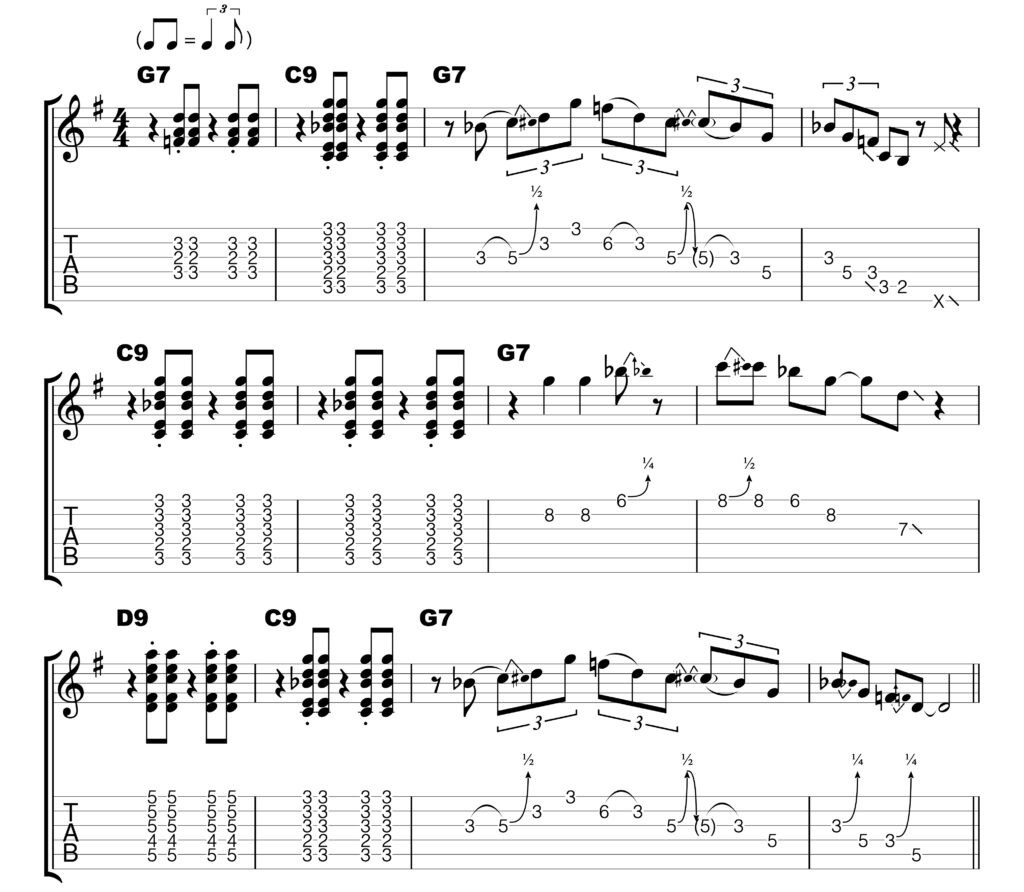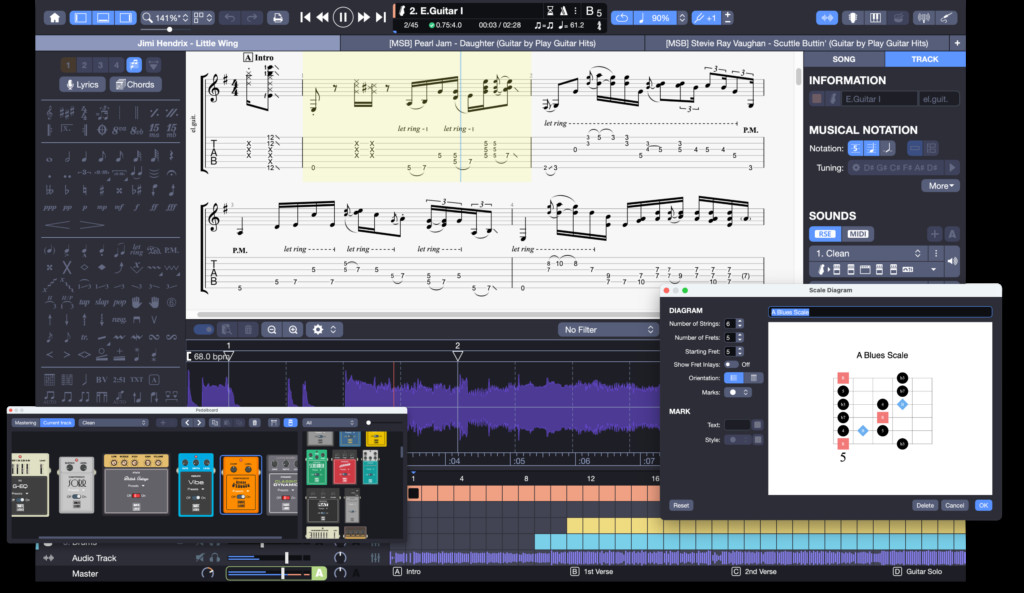If jamming with a band feels out of reach, bring the band to you! This lesson, inspired by my YouTube channel, is designed to create a musical dialogue between us. You’ll find sections in this song specifically for you to improvise your own blues guitar solos.
Before you dive in, let’s set you up for success with some essential tips and ideas.
Grab your guitar and let’s get started!
Understanding the 12-Bar Blues Progression
We’re playing in the key of G. The chord progression is fundamental blues and uses three chords: the I chord (G7), the IV chord (C7), and the V chord (D7). These are arranged in a standard 12-bar blues structure. We begin with G7, and in the second bar, we move to the IV chord (C7) for a classic “quick change,” adding harmonic interest early on.
While this quick change is common, you could also stay on the G7 chord for the first four bars. The rest of the progression follows a traditional blues pattern: two bars of IV (C7), two bars of I (G7), and then the turnaround: V-IV-I-I (D7-C7-G7-G7).
The blues 12-bar structure, easily divided into sections of two or four bars, is perfect for practicing the essential musical concept of “question and answer” phrasing.
The First Chorus: Rhythm and Lead
Before we delve deeper into improvisation, let’s look at a full 12-bar chorus.
This song draws inspiration from John Mayer’s “Come When I Call.” Looking at the tab, you’ll see a clear division within each four-bar phrase. It’s broken down into two bars of rhythm guitar and two bars for a lead guitar phrase.
This creates an antecedent and consequent structure, musically speaking. The rhythm part lays down the groove, emphasizing beats 2 and 4 – the backbeat. The lead phrases, in contrast, are built using the essential minor pentatonic scale (in G at the 3rd fret) and its extensions.
 Minor pentatonic scale in G at the 3rd fret for blues guitar tabs
Minor pentatonic scale in G at the 3rd fret for blues guitar tabs
Blues Guitar Licks: 5 Examples Explained
Now, it’s time for the jam! Each lick is designed to be four bars long, and this musical conversation continues for three full 12-bar blues choruses.
Blues Lick #1 (Bars 1-4)
Repetition is a powerful tool in blues and rock guitar. This first lick, played in 10th position, uses repetition to create a catchy and effective phrase. You can extend this type of lick for as long as you like, but remember to plan your exit smoothly.
Blues Lick #2 (Bars 9-12)
 Blues guitar lick focusing on V-IV chord sequence with chromaticism
Blues guitar lick focusing on V-IV chord sequence with chromaticism
One of my favorite blues lick ideas is to focus on the harmonic movement of the V-IV chord sequence (D7-C7). Notice the symmetry in the first two bars of this lick. The use of chromaticism adds a touch of jazzy sophistication. The final part of the phrase utilizes the familiar minor pentatonic scale. Pay close attention to the blues techniques used here, like bends and vibrato, which are crucial for authentic blues phrasing.
Blues Lick #3 (Bars 5-8)
This lick is inspired by the legendary B.B. King. B.B. King often used licks that centered around the tonic note on the 2nd string, often anchored with the index finger – this is sometimes called the “BB Box“. Bends are absolutely essential to bring this type of phrase to life. The lick then moves across the neck to the tonic note G on the high E string at the 15th fret.
Blues Lick #4 (Bars 1-4)
The position for this lick is the same as the first lick, but this time, we incorporate more blues techniques and movement. You can hear this style of phrasing in the playing of Eric Clapton.
 Blues guitar lick in the style of Eric Clapton with bends and movement
Blues guitar lick in the style of Eric Clapton with bends and movement
Blues Lick #5 (Bars 9-12)
This lick starts with a Delta Blues feel and follows the V-IV chord sequence. Notice how it begins with a chord triad before introducing descending chromaticism and further embellishments. The ending demonstrates a great example of using the minor pentatonic scale across the fretboard.
Explore More with Guitar Pro 8
 Guitar Pro 8 software for learning blues guitar tabs
Guitar Pro 8 software for learning blues guitar tabs
To fully explore these licks and practice along with the backing track, download the trial version of Guitar Pro 8. You can use Guitar Pro to slow down the tabs, loop sections, and really dig into the nuances of these blues phrases.
Download the Guitar Pro 8 free trial
About the Author
 Florent Passamonti, guitar teacher and content creator
Florent Passamonti, guitar teacher and content creator
Florent Passamonti
Journalist, author, YouTuber, and guitar teacher, Florent Passamonti has been sharing his guitar passion for years, including contributions to Guitar Part magazine and his popular YouTube channel. Be sure to check out his channel for more guitar lessons and inspiration!
